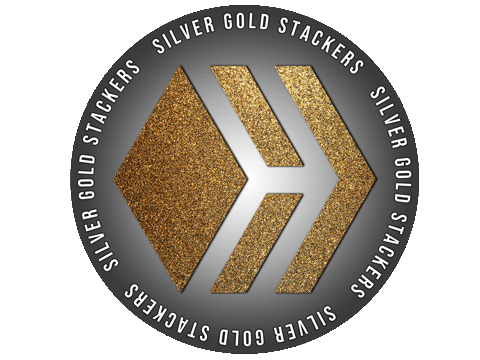
In this world nothing can be said to be certain, except death and taxes.
— Benjamin Franklin
It has come time to clean out my recently deceased grandmother’s home. It is funny to sort through a person’s lifetime of accumulated stuff. I find it particularly funny for my grandmother because she was not a huge accumulator of things. Her condo was always immaculate and uncluttered. So when I come across oddities, I always wonder the story behind the keepsakes.
One unusual find are these two Washington State Tax Tokens.
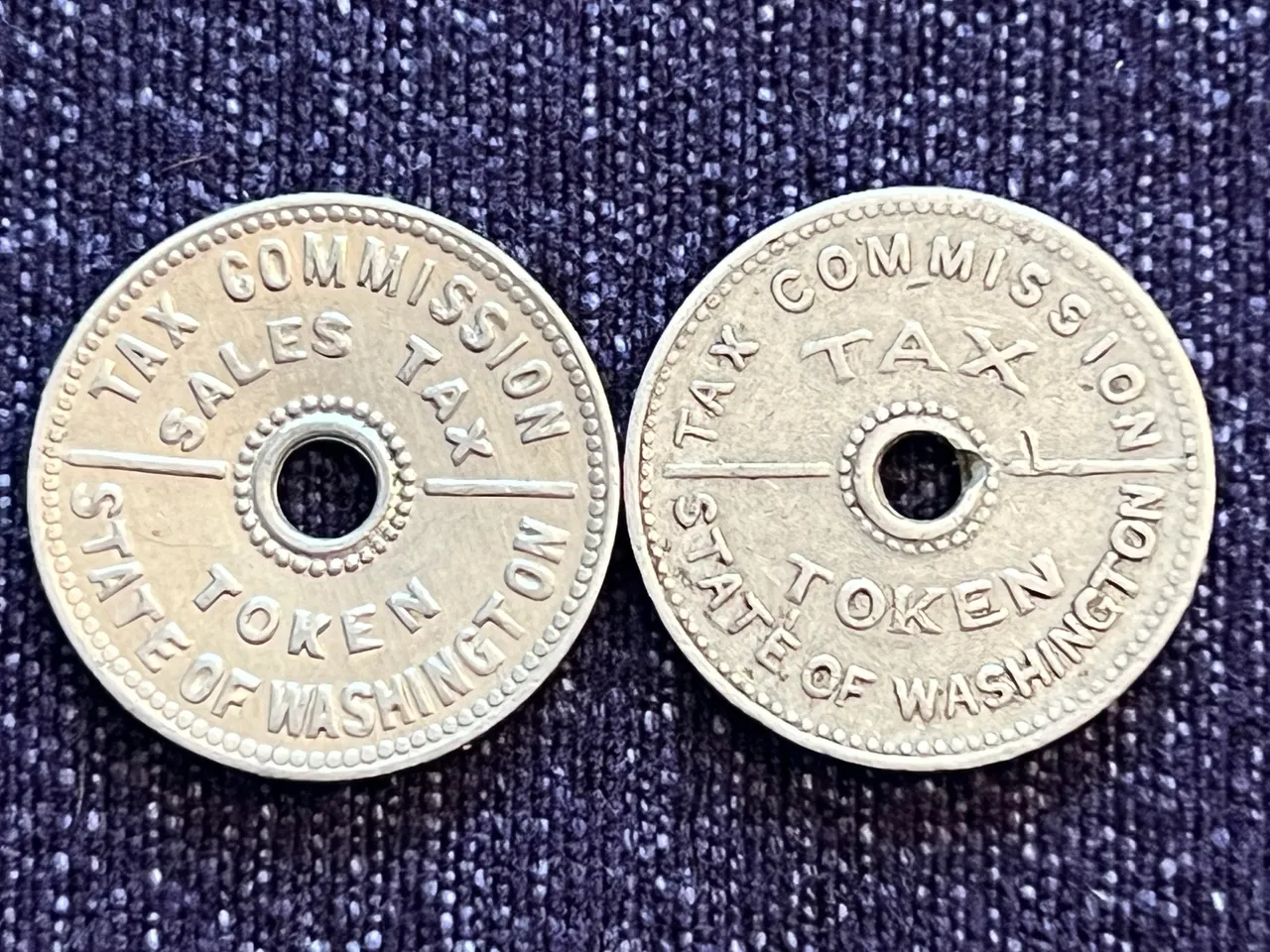
Washington State has never had its own state income tax. Whenthe area was established as a territory in 1853, through becoming a state in 1889, and even until the early 1930’s Washington’s primary source of income came through property taxes.
This was particularly troublesome during the Great Depression. At that time in history, many folks were unable to pay the 2% tax levied on their properties. Many people were also out of work, and the need for government funded social services increased. As a result, citizens voted to limit property taxes while also introducing a state income tax.
However, the income tax measure was quickly struck down by the state’s Supreme Court. Justices declared the tax levy unconstitutional. This left the government in need of another revenue stream for state funded services.
In response to the state’s growing financial crisis, the legislature passed the Revenue Act of 1935. For the first time Washington taxes would be raised primarily via excise verses property. Excise taxes come from transactions or sales, and this tax system still fills Washington State coffers today.
But what happens when the amount of tax to be collected is less than the denomination of printed/minted currency?
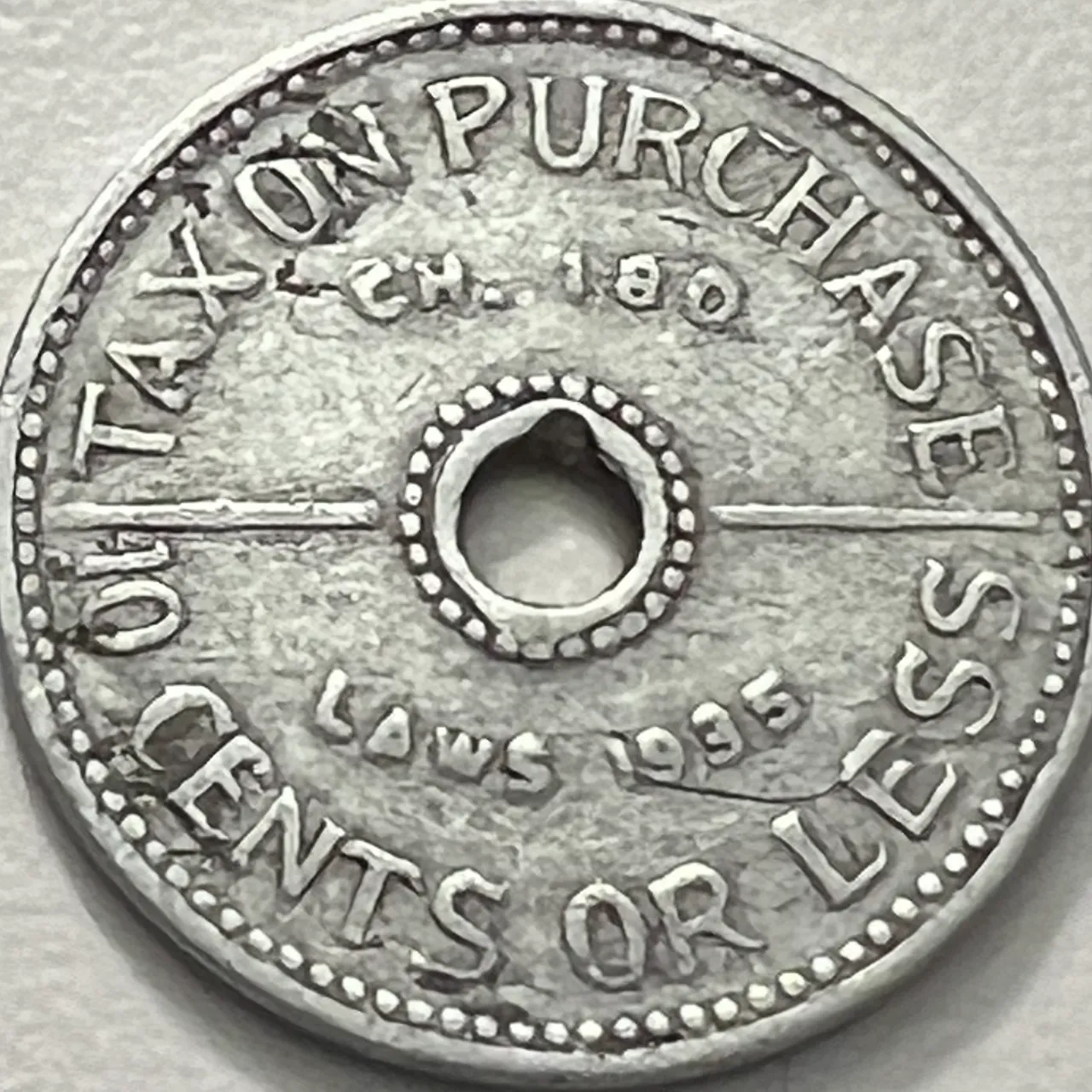
The Washington State tax tokens were adopted in 1935. These tokens were used to pay sales tax at stores for purchases of less than $0.10. Each token is made of aluminum and is about the size of a US 5 cent (nickel) piece. I have seen their original value reported to be 1/10 to 3/10 of one cent. I am not sure which of these valuations is correct.
I am also unsure of when these tokens were removed from circulation. Some internet sources point to the end of the 1930’s, while other sources indicate the last year of the token’s use was 1951. One contributor to a local museum’s Facebook page recalled accepting these tokens in payment at her movie theater job in 1949. She mentioned collecting one token on purchases of $0.10 or under, two tokens on purchases 11 to 20 cents and three tokens on purchases 21 to 30 cents.
I do know that the tokens circulated long enough to produce different versions. The two I have from my grandmother are not the same. Variations can be seen in the photos below.
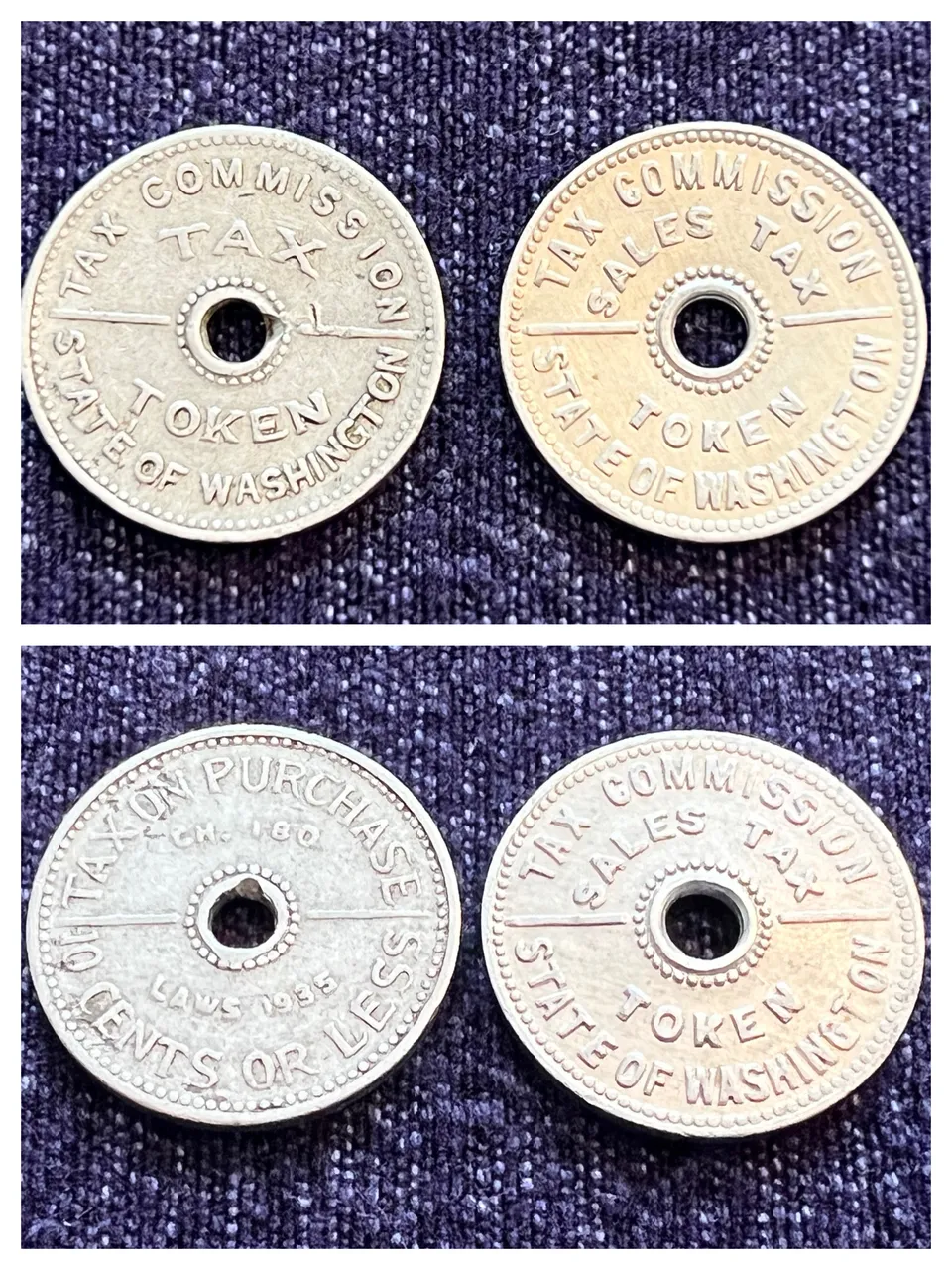
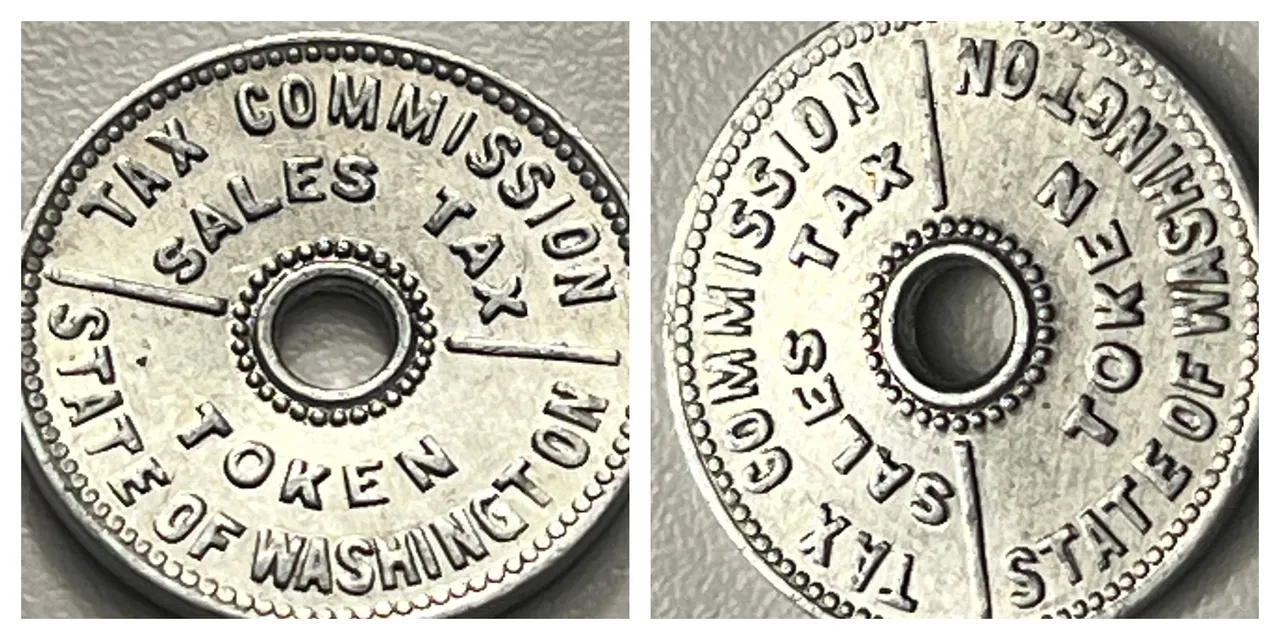
And now for a few more photos.

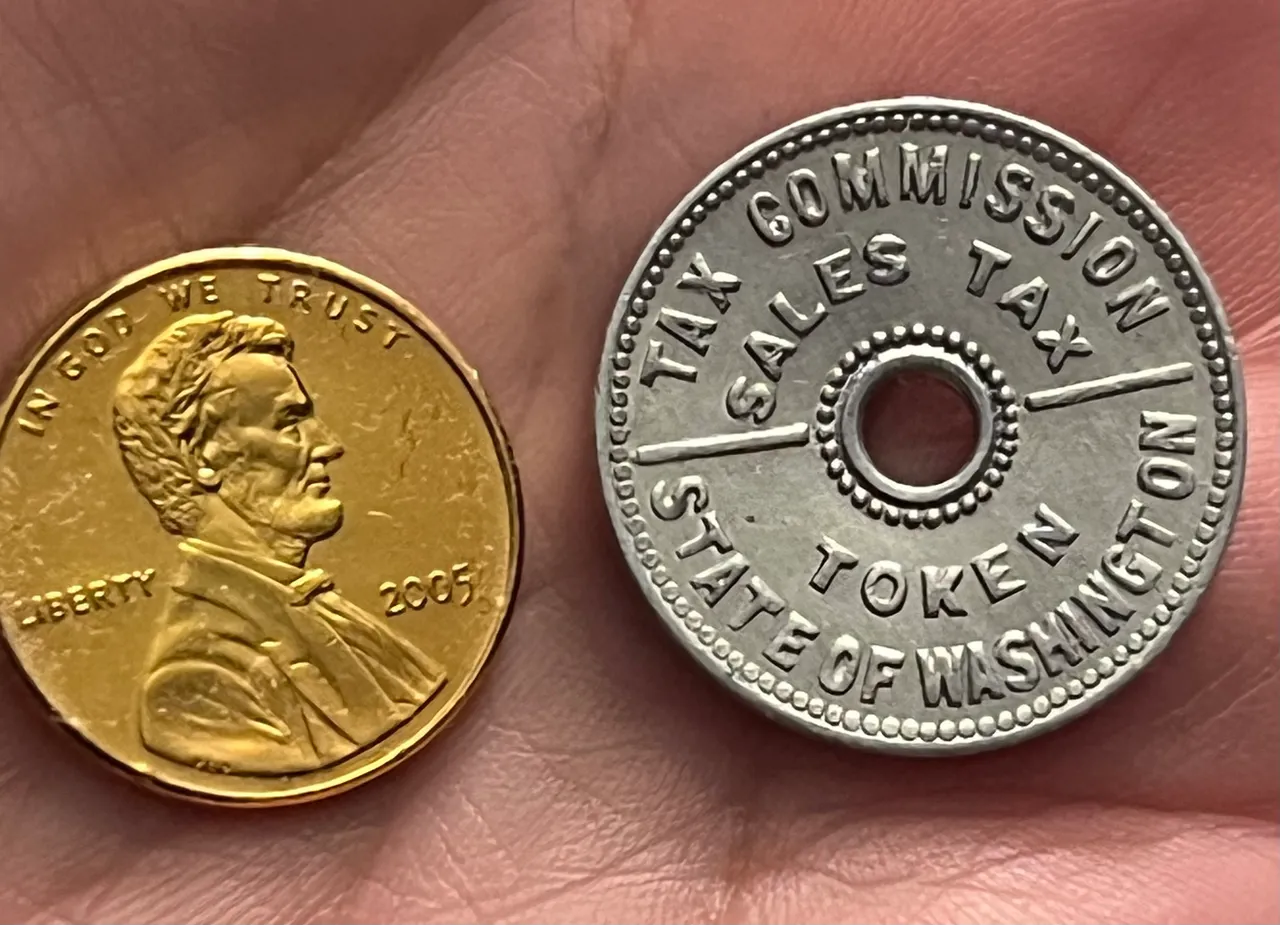
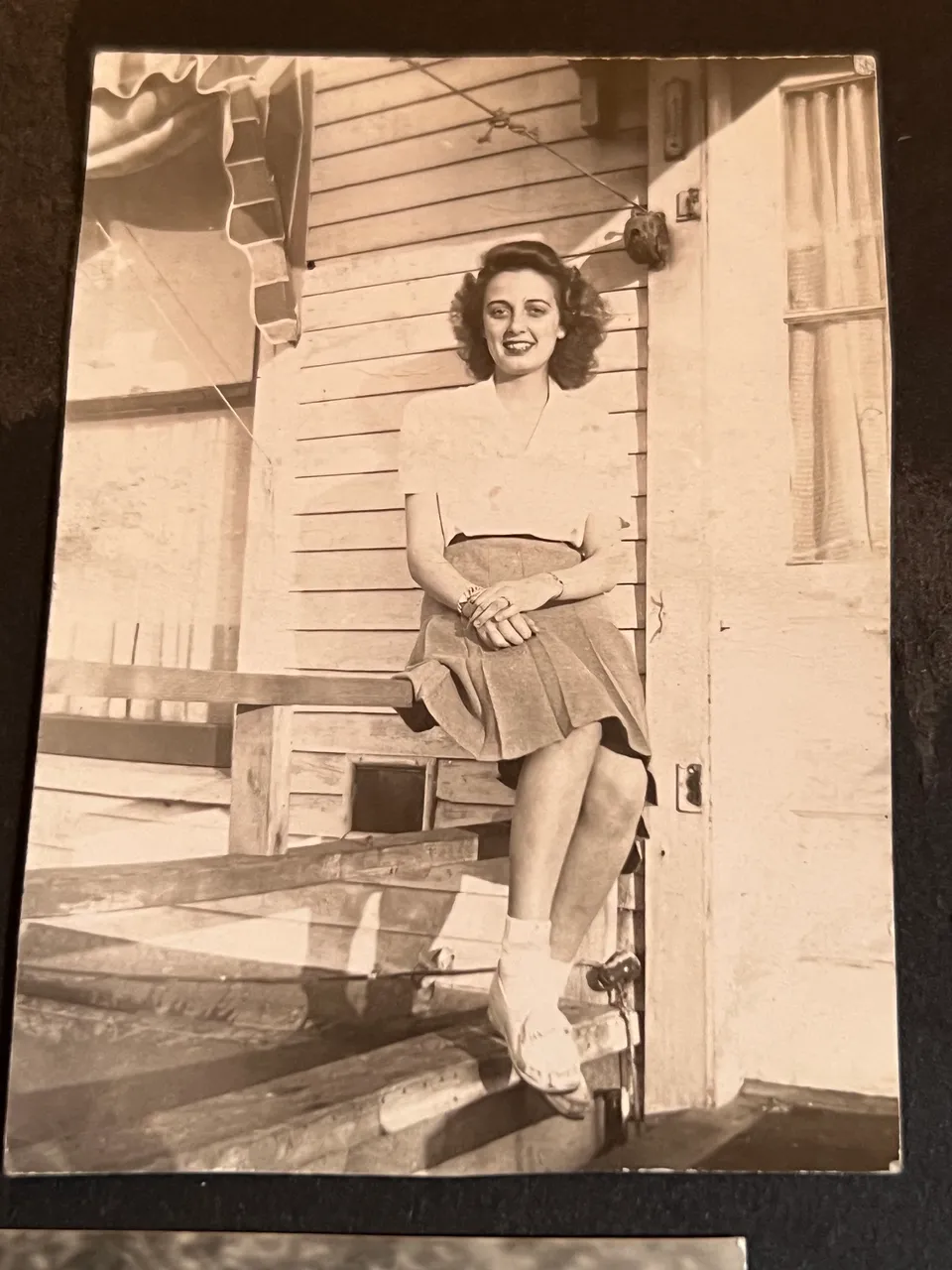
I am glad to add these tokens to my stack. Their collectible value today is only about $5 each. However, they are invaluable to me. Tiny treasures from my grandma that keep her close as the passing of time takes me further from our time together.
